


 |
|
The Urban Frontier and the Value of Voids |

As the leaves mottle their colors and then drop a collage on the sidewalk, I’m drawn like most nature-nostalgic city-dwellers to the abandoned spaces: the rail lines, the lots between warehouses and factories, the places not where parks are planned and saplings planted, but where grasses grow, thickets flourish, the wildness of the world snakes through the city. My favorite of these neglected spaces I first saw as a twelve-year old, when I went to high school on Blue Island and Roosevelt. This was less than fifteen years ago, but that Chicago sometimes seems eons away. There the city was surrounded by what a suburbanite would’ve called urban blight, with the ABLA public housing towers directly across the street. The stretch down Blue Island was a mix of public housing and the South Water Street Market—semi docks and warehouses where produce,and construction materials stopped before being sent around the city. Conventional wisdom considered Pilsen, just past the viaduct at 16th Street, a dangerous place at the time. A little way east on Roosevelt Road, past the old Maxwell Street, where trees sprouted from the roofs of falling-down five-flats, and past the White Palace Grill, you came to the Roosevelt overpass decaying in concrete chunks. From the middle of the bridge, just over the river, you could overlook the largest stretch totally of untamed land in the central city. From Harrison to the north to Cermak on the south, from the river to Clark Street, stretched a undulating landscape of prairies, copses, ramshackle buildings, abandoned roads, train tracks, and toppled industrial equipment.
It was bordered in spots by fantastic modernist structures. Bertrand Goldberg‘s River City Marina sat in its northwest corner like a self-contained space-age outpost on some jungle planet. And the buildings around 16th and Clark were a futuristic tumbling of glass block strewn aside the middle stretch of this forest. The Rock Island runs atop a berm along the east edge of this wilderness, and from the train cars you could see feral dogs and wild heron, even people with pioneer beards, poking through the woods. About the time I was poking around the edges of the wilderness and imagining the fantastic on abandoned train lines, Billy Wimsatt was publishing essays about the area he called “the urban frontier” within his 1994 essay collection Bomb the Suburbs: “Imagine a vast abandoned land—spanning an area of about 25 city blocks in all—a composite of forest, prairie and urban ecological dig. Wild rabbits and pheasants live here. At least a dozen city streets find their dead ends along its perimeter. And with increasing commercialization, it is one of the decaying places at the heart of our city which have inherited one of the most sacred roles in the experience of our nation, that of the frontier.” Wimsatt came across the area as a graffiti writer and saw the frontier fulfilling the city’s thirst for adventure. “For the sheltered bourgeoisie,” he wrote, “it means an introduction to the forbidden city underworld. For the sheltered poor, it means an introduction to the unfamiliar natural habitat…. It exists more than anything as a frontier of the mind, a living monument to the deepest fears and fascinations of a segregated city. Most of us want more out of our vacations than the sterility of theme parks, resorts, and well-traveled wilderness.” To Wimsatt, the frontier was the refuge of the wild, unpredictable and dangerous at the heart of the urban experience. There are bridges to climb, somewhat unstable squatters to run into, cops to chase you. Trees grow, pheasants scatter, and there is no established entrance or exit; no tour guide to will walk you through the urban frontier. The unpredictable experience is, of course, of inherent value to someone who is titling their book “Bomb the Suburbs.” Wimsatt railed at the perverse suburban values of egocentrism, predictability, and control. What he didn’t anticipate, at least in his book, was that the children of suburban dwellers would—as they have in the 15 years since the book was published—flock back into the city. In a strange twist of fate, sons and daughters of suburbia migrated to the city by and large because they ostensibly seek the same unpredictably thrilling experience Wimsatt described. What he may not have predicted is that these urban immigrants brought with them some vestiges of the suburban values of safety, determinism and control they’ve been weaned on. As United States cities again became the heart, rather than the vacant core, of urban centers, these areas of urban wildness become increasingly penned in. A vacant lot habited by bums and wild dogs simply cannot coexist alongside a high-end grocery store, a wine shop, and a fitness club. There is too much cultural dissonance; the mores of the haute cuisine patron and the man who sleeps under a billboard exist too far from one another. And the diners’ club has reservations. This is patently clear every time I walk over Wimsatt’s urban frontier. I had just finished an earlier version of this essay in the spring of 2006 and took a walk across the rebuilt Roosevelt bridge, with its pillars pointing to the manicured museum campus just down the road. I saw bulldozers and chainsaws leveling the entire length and breadth of the frontier. By the end of that week, none but a handful of the largest trees, at the far southwestern corner, remained. The next spring, a coyote showed up in a Quizno’s on State and Adams and I imagined that he had been driven there after his stomping grounds had been cut down by developers. Considering this untamed space in the center of Chicago reminds me of the book Walkscapes by the Italian theoretical architect Francesco Carieri. Carieri traces the history of the walk as architectural act, from nomadic times through landscape artists such as Robert Smithson, Hamish Fulton, and Richard Long. He describes spaces that are left behind by evacuation of urban places. (In the case of our frontier, the abandonment of the railroads yards and the straightening of the Chicago River created this space in the first half of the 20th Century.) He sees these voids as developing their own logic for transiteration, their own paths, and calls the ways through “urban sheep tracks”, perhaps to emphasize the difference between grazing sheep and those in pre-described pens. “Repressed memory, rejection, absence of control have produced a system of empty spaces…” Carieri writes, “through which it is possible to drift… a nomadic space ramified as a system of urban sheep tracks that seems to have taken form as the result of the entropy of the city, as one of the ‘forgotten futures’ described by Robert Smithson. Inside the wrinkles of the city, spaces in transit have grown, territories in continuous transformation in time. These are the spaces where today it is possible to go beyond the age-old division between nomadic space and settled space.” “Actually, nomadism has always existed in osmosis with settlement, and today’s city contains nomadic spaces (voids) and sedentary spaces (solids) that exist side-by-side in a delicate balance of reciprocal exchange. Today the nomadic city lives inside the stationary city, feeding on its scraps and offering, in exchange, its own presence as a new nature that can be crossed only by inhabiting it.”
There is no way to understand these spaces merely by passing through them, Carieri seems to suggest. In order to comprehend the voids in our city, we have to live in them, to try not to modify or disturb them, but to co-inhabit. It’s a tall order on two fronts. First, most of these places are being rapidly displaced. The ABLA homes across from my old high school are completely gone now, replaced by mixed income town homes and a fire station and the Water Street Market has become the Water Street Lofts. Pilsen has been on the cusp of complete gentrification for years, and thanks to the city’s efforts it looks on its way to death-by-memorialization a la Taylor Street or Greek Town. Second, even the modest act of mere inhabiting that most of us would claim— “I only rent in Rogers Park, I’m not gentrifying it,”—seems to result in a more gradual process of displacement. The nightmare scenario is a city of Quiznos, all of us becoming either penned sheep or scavenging coyotes who occasionally wreak havoc before being tranquilized and dragged off. Two odd things have happened since the frontier was leveled in 2006. First, a series of developments have gone up in the area north of Roosevelt Road. The buildings, in their brown brick with spatterings of glass, have been touted on construction billboards as “green developments,” and are wrapped in plastic tarps that advertise with two-story pictures of wildflowers. I suppose this isn’t “odd”; the construction of new condos in Chicago is as notable as the rain falling or the wind blowing. The second thing is genuinely remarkable to a city kid, though. The land of the frontier has sprouted back up again, almost entirely in the last few years. If you were to pass the place where a redirected river crumbles off its bank, you’d witness a landscape dappled in red and yellow, with rolling eye-high grasses and browning cottonwood saplings. The wildness perseveres. Even in 1994, Wimsatt knew that his beloved frontier’s days were numbered. Three development companies had already laid claim to the land, he explains, and wanted only sewers, electrical lines, the pipes that accommodate modern, comfortable life before they began building. Wimsatt spoke to John Heimbaugh, of the Chinese-American Development Corporation, which built on the frontier’s south end (including the admittedly gorgeous Ping Tom Park). Hembaugh spoke of the “townhouses, condos, a park, a hotel, a convention center” to come, most of which has gone up in the intervening 15 years. Wimsatt responds, “Someone like me might slice a couple onions, but realistically there’s no need to feel nostalgia. As long as the city population continues to fall, the golden law of urban entropy holds: gentrification in one area insures abandonment elsewhere. If developers keep swallowing up the edges of downtown like this, hell, the next frontier could be State Street Mall.” While the city’s decades-long population decline more or less leveled off in the intervening years, a walk through the city shows you the empty lots, the factories torn up, the places where plants and animals are making new tracks. At the very least, the city endures, through the entropic wildness that is Chicago—and maybe every American city’s—submerged heart. Be it a lone mountain lion, a pack of urban coyotes, the deer, foxes, and great horned owls in Beverly or Sauganash, the natural world forces fissures in the sidewalk cracks. “In truth,” Wimsatt wrote, “Chicago has many frontiers…. Everywhere train tracks, water, factories, parks, rooftops—or just plain neglect—conspire to create secret places within the city. It is possible to pass these places… but the real luxury is in being here on foot, in having the freedom to roam the land indefinitely.” I was walking along 18th Street at Peoria about a week ago, in that part of Pilsen most completely turned over to swept streets, art galleries and restaurant patrons. It was an area held to be hostile by suburbanites back in the day, but now bustling with hipsters and UIC students. A block north lay a vast gravel lot, already advertising condos for some potential future. I’d just left a fancy new bar, where I’d been sitting next to Hewlett Packard software salesman talking about the wonders of Las Vegas. I was stopped in my tracks by the hissing of two massive raccoons, twenty-five-pound pissed off mammals clanging over a gangway fence and flashing their teeth. To the north and the south, overgrown train tracks, half abandoned, sketched out their path. I’m not sure where they came from before they stopped for scraps in a backyard garbage can. Who knows what other weedy, wild wrinkle of the city they were headed toward. Where ever the new frontier will be, I’m hopeful these two urban pioneers will carve their secret path to it first. |
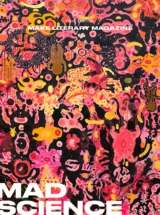
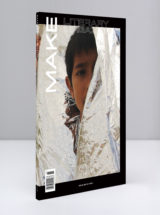
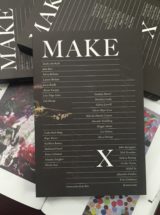
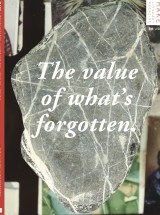
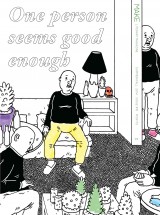
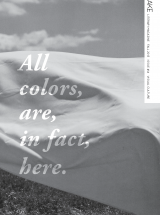
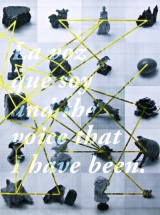
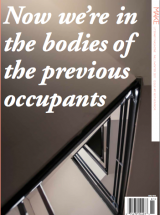
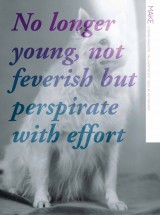
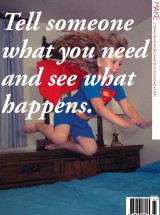
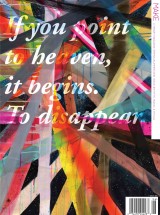
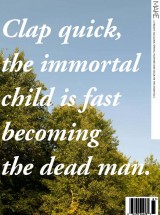

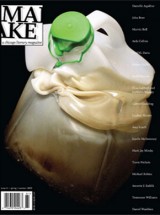
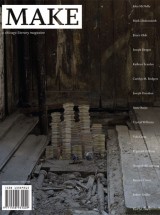
click to see who
MAKE Magazine Publisher MAKE Literary Productions Managing Editor Chamandeep Bains Assistant Managing Editor and Web Editor Kenneth Guay Fiction Editor Kamilah Foreman Nonfiction Editor Jessica Anne Poetry Editor Joel Craig Intercambio Poetry Editor Daniel Borzutzky Intercambio Prose Editor Brenda Lozano Latin American Art Portfolio Editor Alejandro Almanza Pereda Reviews Editor Mark Molloy Portfolio Art Editor Sarah Kramer Creative Director Joshua Hauth, Hauthwares Webmaster Johnathan Crawford Proofreader/Copy Editor Sarah Kramer Associate Fiction Editors LC Fiore, Jim Kourlas, Kerstin Schaars Contributing Editors Kyle Beachy, Steffi Drewes, Katie Geha, Kathleen Rooney Social Media Coordinator Jennifer De Poorter
MAKE Literary Productions, NFP Co-directors, Sarah Dodson and Joel Craig